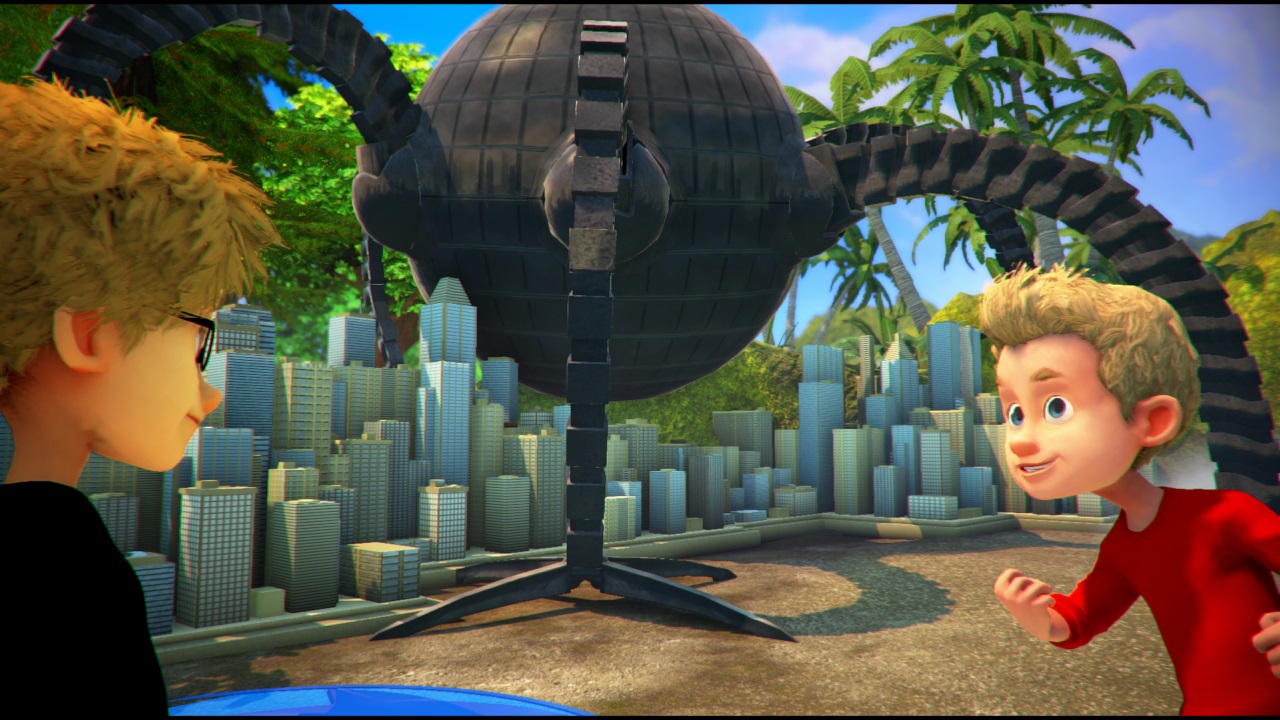Platform:
Xbox One
Released:
October 31, 2017
Publisher:
Microsoft Studios
Developer:
Asobo Studio
Pretty much everyone loves Disney films. Those who don’t are widely considered to be monsters and to have lost touch with their inner-child. The same cannot be said for Disney video games, however, as more often than not they come to us as half-cooked movie tie-ins that fail to impress even their target audience, let alone adult gamers. Rush: A Disney-Pixar Adventure reaches for more than a movie tie-in, bringing together a collection of worlds based on the wildly popular Disney/Pixar brands, filled with the popular characters from those movies.
Jumping into Rush, I found myself reminiscing of old Disney titles on the PS1 and PC; titles like Hercules and Toy Story 2, which as a child made me feel like I was there experience the world first-hand. As I’ve aged, those rose coloured glasses have dulled and the truth of the matter is movie tie-ins just don’t really work. While I can confidently say I enjoyed Rush a lot more than previous Disney movie tie-ins, the game still left something to be desired.

Originally released on the Xbox 360 as Kinect Rush: A Disney-Pixar Adventure, this remaster has shed its Kinect shackles and enlisted the Xbox One controller for a more widely approachable experience. A familiar control scheme to most platforming titles makes getting into Rush easy, and the overall simplicity of a title aimed at children means there is a very low barrier for entry.
The game takes place in Pixar Park, where kids present episodes set in several of the Disney/Pixar worlds: Toy Story, The Incredibles, Cars, Up, Ratatouille, and Finding Dory (the latter a new addition to the remaster). Each “world” consists of 3 episodes (except Finding Dory, which only has 2), each with unlockable goals to encourage the player to go back to play through the episodes multiple times. There are hidden routes to find, character tokens to acquire, and little easter eggs scattered throughout for the eagle-eyed player too.

The worlds are vibrant and colourful, much like their film counterparts, and have the authenticity to feel like you really are playing in those worlds. The high-definition remaster gives it a solid sheen, and the 60fps makes the gameplay smooth… when it actually runs 60fps. There were many times where the game slowed to a chugging crawl, even when there was little happening on-screen. In a game where speed is essential (it is called Rush after all), these slow downs were frustrating, and occurred in most of the episodes in the game.
The episode plots are very basic, playing out similar to an after-school cartoon, but I didn’t find myself bored. The score-attack nature of the game is engaging, and in some of the better constructed episodes I did indeed go back and unlock as much as possible. Your score determines what medal you will receive at the end out of bronze, silver, gold, and platinum, and the points will unlock new characters, secondary objectives, and bonus art as well. The more action-packed films tend to have the more action-packed episodes; Toy Story and The Incredibles stand out as the most enjoyable worlds to play in. That said, with each episode lasting between 3 – 5 minutes, there is a noticeable lack of depth across the board in Rush: A Disney-Pixar Adventure.
“At its best, Rush plays similar to a bite-sized Lego title. At its worst, it is little more than a weak mobile runner similar to Temple Run or Minion Rush.”
The gameplay varies little between worlds, with some episodes leaning into platforming and light puzzle solving, and others pushing you down a corridor collecting coins and facing mini-bosses. The platforming is snappy and magnetic, a feature left-in from the Kinect version, and the camera is sound, if a little troublesome in tighter corridors.
At its best, Rush plays similar to a bite-sized Lego title. At its worst, it is little more than a weak mobile runner similar to Temple Run or Minion Rush. The worst offenders are the Cars and Finding Dory worlds, where gameplay devolves into simply holding the right trigger and moving the left stick. In Finding Dory, there isn’t even enough substance to produce a 3rd episode. In a game that is already fairly shallow to begin with, these two worlds prove even more disappointing… not even Owen Wilson’s voice acting as Lightning McQueen can salvage poor gameplay.
To end on a positive, the majority of the sound design and voice work is of a high quality. The voice actors do a great job of recreating the voices from the movies, and the music is whimsical and fits in with themes we all know and love. So often games aimed a children cut corners on these elements, but thankfully Rush does its best to stay true-to-form, a feature I definitely appreciated.
Positive:
- Colourful worlds from the Disney/Pixar films
- Decent, snappy platforming
- Solid sound design and voice cast
Negative:
- Game often devolves into a dull runner
- Lack of depth across the board
- Frequent frame rate drops
Honestly, I enjoyed my time with Rush: A Disney-Pixar Adventure. My expectations were low, and I was pleasantly surprised with some of the episodes and the level of detail in them. Unfortunately, a lack of consistency in gameplay across all the worlds, some stand-out absences (excuse me, A Bugs Life and Monsters Inc. called…), and frame rate drops stop Rush from turning many heads and redeeming the low-opinion gamers have of movie tie-in video games.









